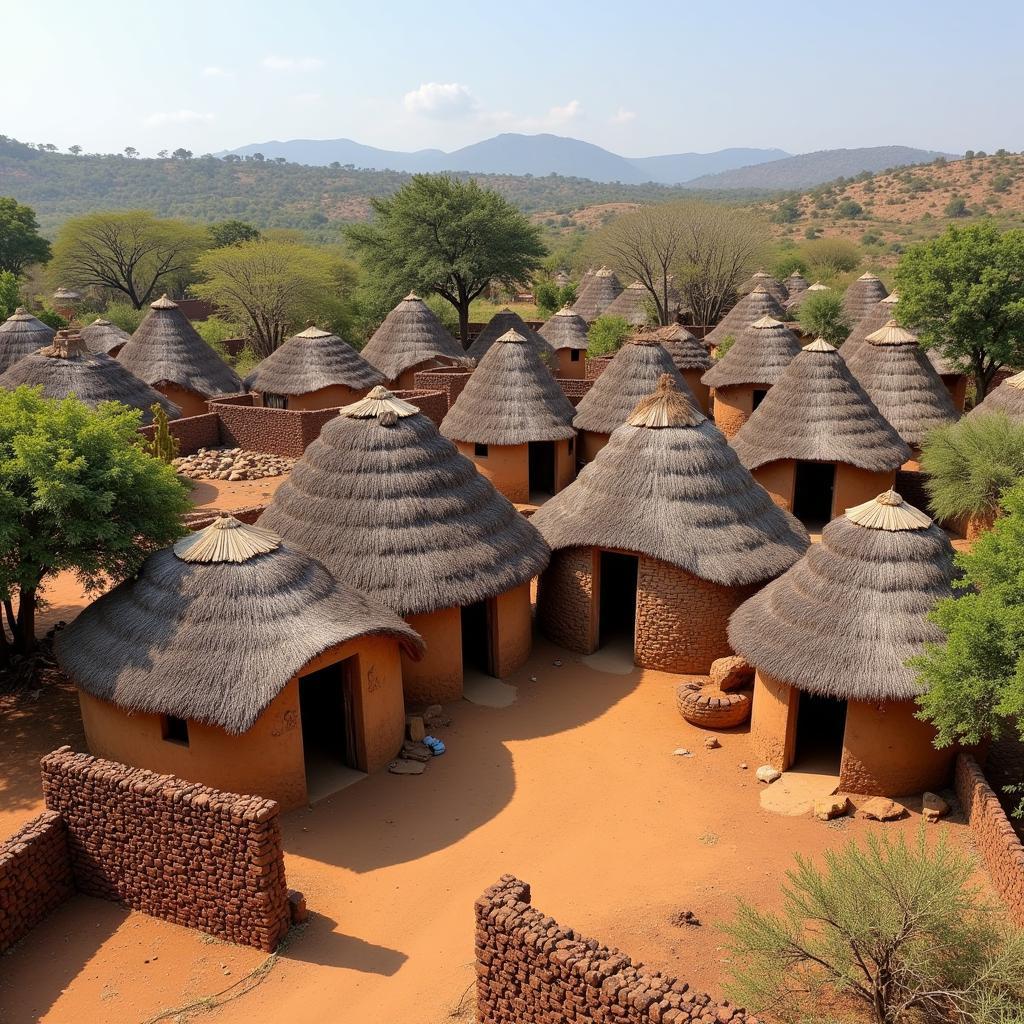African Huts Pictures: A Glimpse into Diverse Cultures and Traditions
From the sun-drenched savannas to the lush rainforests, the African continent is home to a dazzling array of cultures and traditions. One of the most fascinating aspects of this diversity is reflected in the traditional dwellings, or huts, found across the continent. These structures, often crafted from natural materials, are not merely shelters but embody a deep connection to the land, climate, and cultural beliefs of the people who build them. “ Variety of African Huts“
Variety of African Huts“
More Than Just Shelter: The Significance of African Huts
African huts are much more than simple shelters; they are intricate expressions of cultural identity, social structure, and ancestral wisdom. These dwellings often serve multiple purposes, functioning as homes, community centers, and even sacred spaces. The shape, size, and materials used in their construction vary greatly depending on the specific region, climate, and cultural practices. For instance, nomadic communities favor lightweight and portable structures that can be easily assembled and disassembled, while settled agricultural societies tend to build more permanent and elaborate dwellings. “”
Exploring the Diversity of African Hut Styles
Across the vast expanse of Africa, one encounters a remarkable diversity of hut styles, each with its unique characteristics and cultural significance:
Round Huts: The Enduring Symbol of Unity
Round huts are among the most prevalent styles found across the continent. Their circular shape symbolizes unity, community, and the cyclical nature of life. In many cultures, the circular form also represents the cosmos, connecting the inhabitants to the spiritual realm.
Rectangular Huts: Practicality and Social Order
Rectangular huts, often found in regions with more settled agricultural communities, reflect a different set of priorities. These structures maximize living space and offer a practical layout for families. Their angular design often reflects a hierarchical social structure, with specific areas designated for different members of the household.
Conical Huts: Adapting to Challenging Environments
Conical huts, characterized by their sloping roofs, are particularly well-suited for regions with heavy rainfall or intense sunlight. The steep angle of the roof allows rainwater to run off easily, preventing leaks and water damage. In arid regions, the conical shape promotes ventilation, keeping the interior cool and comfortable.
“”
African Construction Techniques: A Legacy of Ingenuity
The construction of African huts involves a remarkable blend of ingenuity, artistry, and respect for the environment. Traditional builders utilize readily available materials such as mud, thatch, wood, and bamboo, crafting durable and sustainable dwellings that have stood the test of time.
“African construction techniques,” remarked Dr. Abena Agyeman, an expert in African architecture, “are a testament to the ingenuity and resourcefulness of African communities. These techniques, passed down through generations, demonstrate a deep understanding of local materials and a commitment to sustainable building practices.”
The Future of African Huts: Preserving Tradition in a Modern World
In a rapidly changing world, traditional African huts face challenges from urbanization, modernization, and changing lifestyles. However, there is a growing movement to preserve these architectural treasures, recognizing their cultural significance and the lessons they hold for sustainable living. From eco-tourism initiatives that showcase traditional building techniques to architectural projects that incorporate indigenous design elements, there is a renewed appreciation for the beauty and ingenuity of African huts.
FAQs about African Huts
1. What are African huts made of?
African huts are typically made from natural materials like mud, thatch, wood, bamboo, and reeds. The specific materials vary depending on the region and its resources.
2. Why are African huts often round?
The round shape holds cultural significance in many African societies, symbolizing unity, community, and the cyclical nature of life.
3. How long does it take to build an African hut?
The construction time varies depending on the size and complexity of the hut, but it can range from a few days to several weeks.
4. Are African huts still built today?
Yes, African huts are still built today, although their prevalence varies. While modern housing is becoming more common, traditional huts continue to be built in rural areas and are valued for their cultural significance.
5. Can I visit traditional African huts?
Yes, many communities across Africa welcome visitors to experience their culture and see traditional huts. Eco-tourism initiatives often provide opportunities to stay in or tour such villages.
Need More Information?
For inquiries or assistance with experiencing the beauty of African culture, please contact:
Phone Number: +255768904061
Email: kaka.mag@gmail.com
Address: Mbarali DC Mawindi, Kangaga, Tanzania.
Our dedicated team is available 24/7 to assist you.



